Eric is a quantitative researcher focusing on improving creative industry management decisions with a particular focus on video game business management decisions. His goal is to expose ways that data can be used to improve the organizational learning and decision-making process. The central idea behind his research is that knowledge can be mistaken and needs to be continually tested through data and falsification.
Prior publications and speaking sessions are listed below.
"Video Game Business Management Economics: Employing Industry-Level Data to Improve the Decision-Making Process"
PhD Dissertation Available Here or at Research Gate
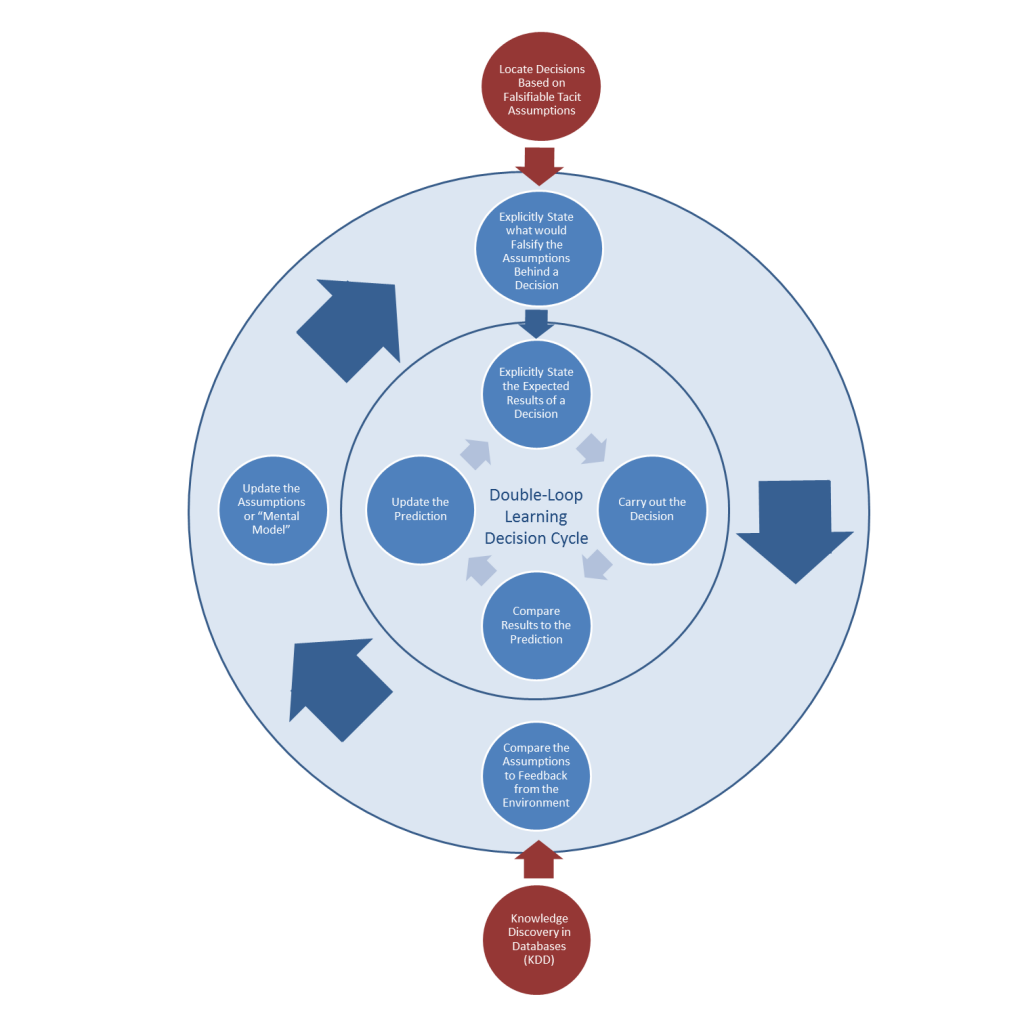
Abstract
Current research into video game business management is sparse. What research does exist focuses on the creative process of video game development; however the business side can longer be neglected, with individual game development project budgets in excess of US $100 million in some cases. Business management decisions are made by publishers and developers based on their tacit knowledge of what has worked in the past according to their experience; however, left unverified there is a risk that this tacit knowledge may not reflect rapidly changing market realities. Managerial economics is concerned with the optimization of the decision-making process given limited resources, and such a rational decision-making process is required if publishers and developers want to ensure that the knowledge their organizations contain best reflects the reality of the wider industry. Through this research, I rely on a managerial economics perspective and use knowledge discovery in database (KDD) techniques to answer the following questions:
* MRQ: How can an economic perspective that views decision optimization in terms of making the best use of limited organizational resources allow for the use of data from the wider industry to question assumptions and improve video game business management decision processes?
* SRQ1: What is the state of intellectual property exploitation and exploration strategies in innovation and business management practices within leading video game organizations and how are those strategies changing?
* SRQ2: What role do women play in making creative decisions within video game development organizations and how does this compare to video game consumer demographics?
* SRQ3: How do the product scope decisions made in video game project management reflect what provides value to consumers?
This research will propose a learning process tailored to a creative industry such as video game development as an answer to the major research question. Although tacit assumptions regarding how to best employ organizational resources are traditionally difficult to question because of the artistic or symbolic nature of the products of creative industries, a managerial economics perspective allows these assumptions to be questioned and tested in a rational manner. The proposed process incorporates data from the wider video game industry to falsify or validate assumptions behind management decisions. This approach will be applied in answering the three subsidiary research questions through quantitative research into the results of one strategic innovation management decision, one human resource or “talent management” decision, and two project management product scope decisions in the video game industry. The answers to these three research questions provide examples for how KDD techniques can contribute to improving decision-making within a creative industry such as video game development. The proposed learning cycle expands on the traditional “double-loop” learning cycle by incorporating two important steps: locating decisions based on tacit assumptions and framing questions to attempt to falsify those assumptions, and then employing KDD techniques with data from the wider video game industry falsify or validate the tacit assumptions behind those decisions.
"Gender composition of teams and studios in video game development"
published in Games and Culture, August 19th, 2019
co-authors: Kazunori Miyata and Tetsuhiko Yoshida

Abstract
Women in video game development face issues such as the pay disparity reported at Rockstar North and the “bro culture” issues reported within Riot Games. Some development roles are rewarded more, whether by pay or creative voice, than others. Although there has been research into gender disparity by roles within other entertainment industries, such as the movie industry, there has yet to be a data-based examination of gender disparity broken down by role within the video game industry. To provide a more nuanced examination of the gender gap that exists in game development, we analyze the gender and roles for 14,265 staff listed in the credits of 27 games produced by seven of the video game publishers most represented in top seller lists to discover how the distribution of women and men varies by role.
"Improving video game project scope decisions with data: An analysis of achievements and game completion rates"
published in Entertainment Computing, March 22th, 2019
co-author: Kazunori Miyata
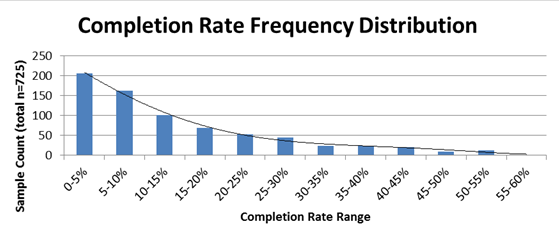
Abstract
Game development project managers and product owners, such as directors, producers, and studio heads, rely on experience-based tacit knowledge to decide how much content to create for players. However, they could be operating on a misunderstanding of the way their players consume game content and how much game content is desirable to players.
This research presents the results of data mining video game “achievement” data to discover trends in game completion rates and correlations to factors outside of the length of the game itself. Through tagging game achievements that signal a player has “finished” the primary single-player content, this research discovered that, for most games, few players will consume the provided content, although “higher quality” content does maintain a higher player retention rate. With an understanding of how players consume game content, project managers and product owners can make more informed decisions on project scope, which could reduce game budgets and improve production efficiency.
"Estimating the value of multiplayer modes in video games: An analysis of sales, ratings, and utilization rates"
presented at the 10th International Joint Conference on Knowledge Discovery, Knowledge Engineering and Knowledge Management (IC3K 2018)
September 19th, 2018
co-author: Kazunori Miyata
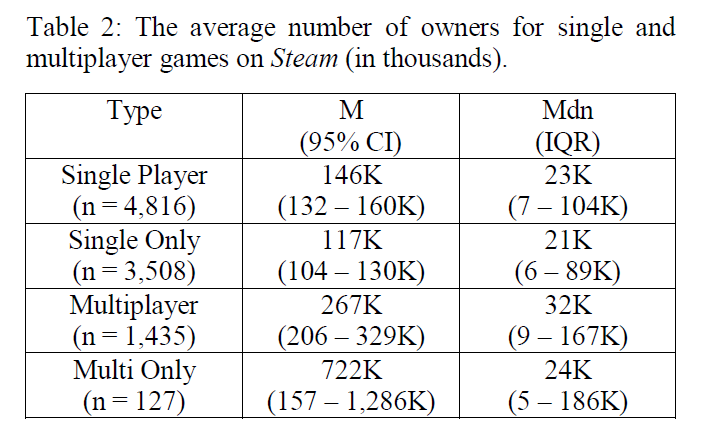
Abstract
Video game organizations are under pressure from growing development costs and competition from other sources of entertainment. Making informed project scope decisions is critical to avoiding budgetary and schedule waste, but little information regarding best development practices is made public, and many decisions are made, not informed by past data, but by the tacit knowledge of project owners. One way developers have attempted to improve sales on their games and follow-up content is through the inclusion of online multiplayer functionality. However, multiplayer functionality is expensive to develop and can significantly add to the costs and schedule of a game project, particularly if the decision to include it is made late in the process. This research explores publicly available data to discover the value that multiplayer functionality provides so that project owners can make a more informed decision earlier in the development process.
"Live streaming changes video game testing: Observing contextual player behavior over video streaming services"
presented at the 2017 Annual Meeting of the Society for Social Studies of Science (4S) in Boston, USA
September 1st, 2017
co-author: Yasunobu Ito
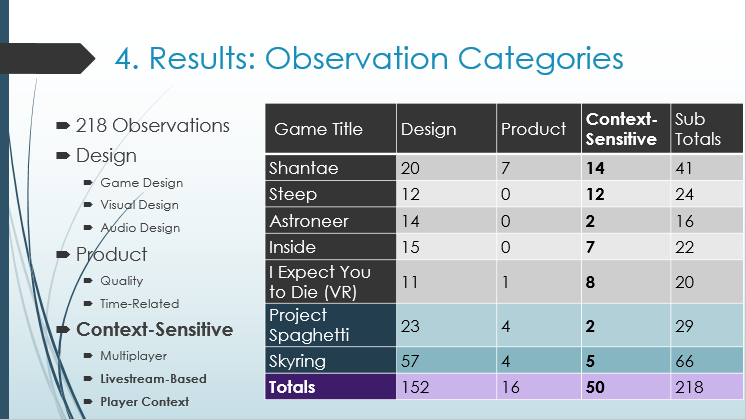
Abstract
Creators of video games need methods for judging the effectiveness of their designs with players to ensure their creations engage and satisfy intended audiences. Traditionally, they have relied on monitored game testing sessions with players conducted in offices or testing laboratories. However, this artificial setting removes people from the context in which they interact with video games and fails to capture the true play experience.
With the recent rise in popularity of live streaming through services such as Twitch.tv, YouTube Live, and Hitbox, players from around the world are broadcasting their video game experiences live and unedited from their living rooms and bedrooms to an audience over the internet. Many are comfortable “thinking aloud” while they play, providing real-time verbal feedback regarding the experiences they are having.
This paper proposes that observing players over live streams can elicit otherwise hidden, context-sensitive insights that are absent from a traditional user testing office or laboratory setting. In the study conducted, six players were observed broadcasting their game playing experiences over a live streaming service, while observations covering design, the player and their environment, and interactions with online communities were recorded and analyzed to explore the variety and richness of information they reveal.
This paper puts forward two theses: (1) that testing video games over live streams can provide a rich source of information to help creators improve their games, and (2) that there are contextual observations unique to studying players over a live stream that could provide valuable insights into the way people truly play their games.
"Analyzing video game completion achievements implications for game project scope"
presented at the IFIP International Conference on Entertainment Computing 2017 (ICEC 2017) in Tsukuba
First Published August 25th, 2017
co-author: Kazunori Miyata
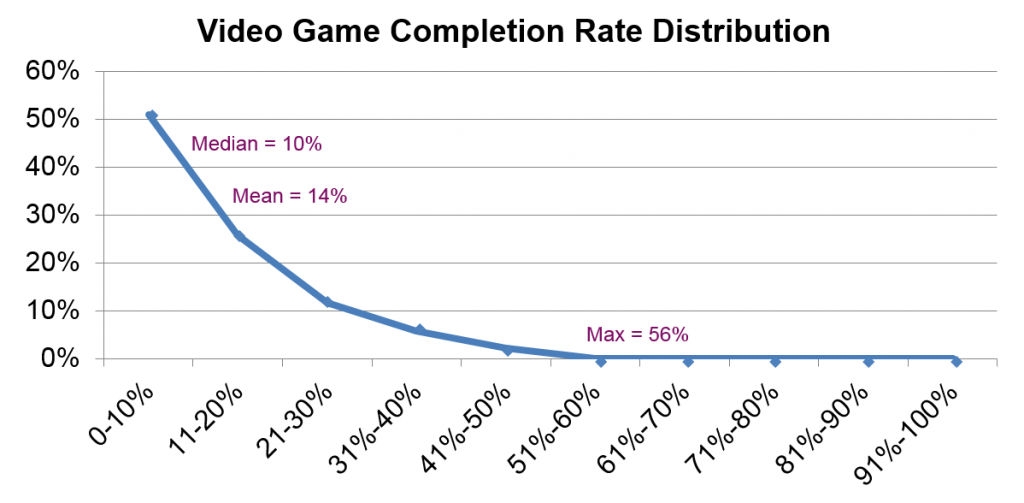
Abstract
Game development project managers and product owners, such as directors, producers, and studio heads, rely on experience-based tacit knowledge to decide how much content to create for players. However, they could be operating on a misunderstanding of the way their players consume game content and how much game content is even desirable to players.
This paper presents the initial findings of our efforts to mine video game achievement data to discover trends in game completion rates and correlations to factors outside of the length of the game itself. Through tagging a sample of game achievements that signal a player has “finished” the primary single-player content, we discover that, for most games, few players will consume all of the provided content. With a better understanding of how players consume game content, project managers and product owners can make more informed decisions on project scope, which could reduce game budgets, make schedules easier to meet, and improve overall production efficiency.
"Livestreaming for user testing: Context-rich observation of game player behavior"
presented at the 2017 International Conference on Management Science and Engineering (ICMSE 2017) in Nomi, Japan
First Published August 19th, 2017
co-author: Yasunobu Ito
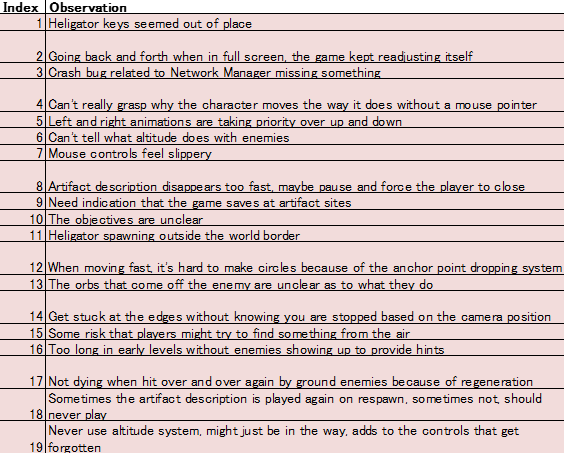
Abstract
Game developers need methods for judging the effectiveness of their game designs. Although traditional user testing methods have been employed by the video game industry, they fail to capture players in their natural settings, indicating a more ethnographic approach could generate new insights into their behaviors. With the recent rise in popularity of livestreaming, this paper proposes that employing a “think-aloud” testing method over a livestream can be a useful addition to the testing tools available to developers and provide valuable contextual insights that could help game designers discover radical new innovations.
By observing the livestreams for seven games, including two games created by one of the researchers, we discover that livestreaming not only exposes many of the design and product quality issues revealed by more traditional user testing, but that it also exposes many contextual behaviors that would otherwise remain hidden in a laboratory setting. This has implications not just for user testing within the video game industry, but for user testing in other industries desiring more contextual information about their consumers.